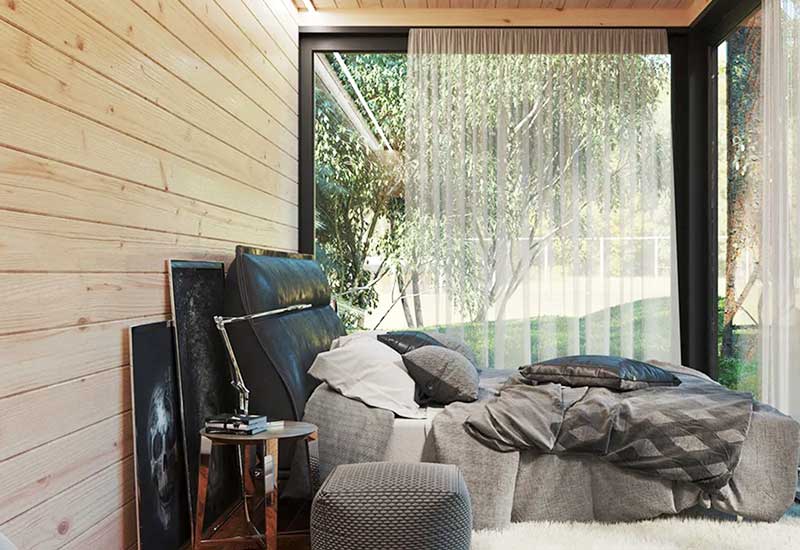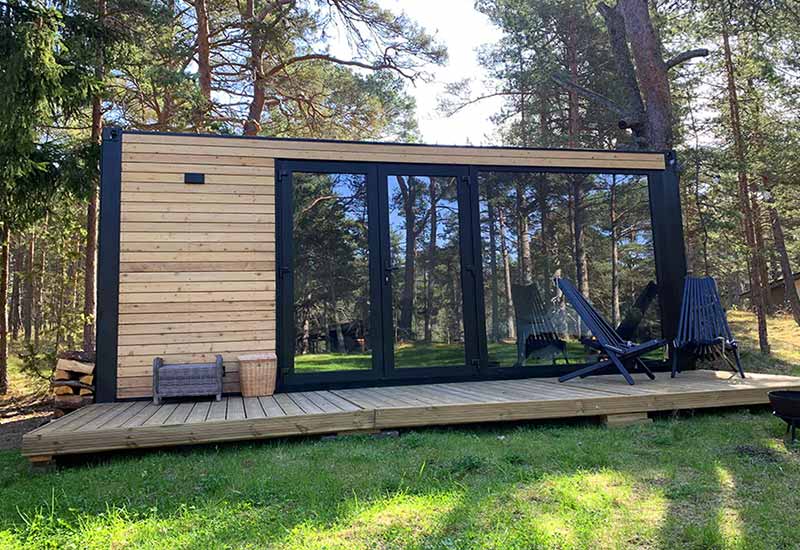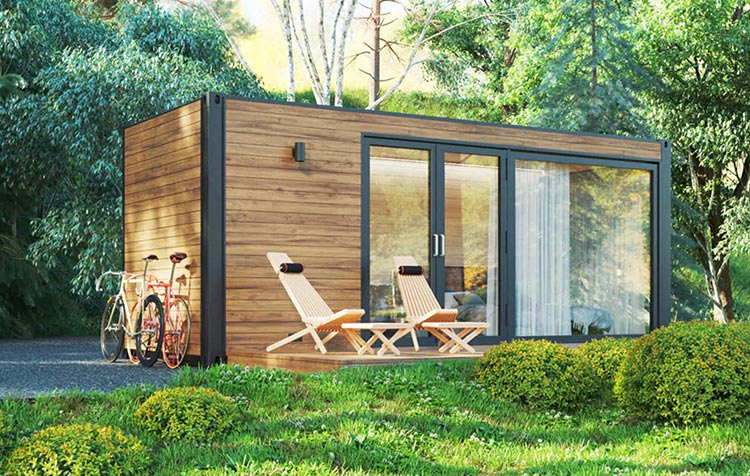Want to learn more about working and living in residential containers? Then you've come to the right place! The attention for the climate change, the biggest environmental problem of our time, has arrived in the middle of society. A glance at the shelves of supermarkets, the shopping streets of city centers or the social media shows: more and more people are striving for a sustainable lifestyle on - and that's a good thing. Heatwave summers, flood disasters, forest fires: the consequences of global warming have long been visible - and not only in the news, but also right on our doorstep.
Domestic flights, meat consumption, Fast Fashion: All these climate-damaging and destructive issues have finally moved into the focus of social debates. But little is being said so far about how we can live sustainably.
Here I would like to conduct a little thought experiment about it and make it clear why living in minimalist living containers in particular offers unexpected opportunities. Let's go!
How much do buildings contribute to global CO2 emissions?
Unimaginable amounts of concrete, more and more single-occupancy housing in cities, and an explosion of new development in the suburbs - it's logical that buildings are a key contributor to a state's overall emissions. A quick search at the sustainable search engine Ecosia but shows amazing things: about 40 percent of global emissions come from buildings.₁ It is becoming clear: Buildings have a huge share in the carbon footprint. Reason enough for me to take a look at current housing and the alternatives.
How do we want to live in the future?
A large house, ideally freestanding, with a flowering garden and a cozy garden house - this is probably still the dream of many people in Germany today. The trend toward the single apartment is also extremely space-intensive. From young students to single pensioners - more and more people live alone. They heat for themselves alone, cook for themselves alone, use the refrigerator for themselves alone. I think you can see where that thought is going. So are there ecological alternatives that make living more environmentally friendly?
My thought experiment about the container house

Less is more. What leads to fewer greenhouse gases in consumption could also work for living. Is it possible to live not in the large, detached house, but also in the small garden house in front of it, which requires less energy and takes up less time?
Tiny Häuser sind in den USA bereits ein großes Thema. In Deutschland macht die Bürokratie das Leben auf wenig Platz noch etwas schwer. But what could everyday life look like in, say, 13 square meters?
Let's drop all the regulations from the state side and get to the core question - each state and each municipality has its own specifications anyway.
Is it possible to live environmentally friendly in a small space?
One principle for fewer emissions is "re-use." At Reuse of existing objects logically produces less CO2 than the production of new things.
Does this also work for living space? The surprisingly simple answer: Yes! For example, decommissioned shipping containers are refurbished, insulated and cleverly equipped so that they can be used as living containers. Such a Container house sounds a little crazy to many of us, but it could make an important contribution to reducing personal ecological footprint afford. In the living containers you will find everything you need for everyday life: A kitchen, a bathroom with shower and toilet, and space for a bed and a table - only compact on 13.2 m². Completely in the sense of the minimalist lifestyle.
Due to the standardized dimensions, the residential container house offers you another advantage: Any truck can transport the living container. So if you want to move to a new city or out into the country, the container house is your flexible companion. As I said, we still have to leave rigid building regulations aside for these considerations. Slowly, however, a change and an openness to the topic is becoming apparent in individual communities. Soon we could be able to start with the living container - like with a snail shell - move from one stage of life to the next.
What foundation needs a container house?
Thus, the flexibility and compactness are significant advantages of a container house. In addition, old material is reused. But what does the little house actually stand on? Even if the living container is basically mobile, it should still be stably and securely mounted on a pitch can be.
Does this mean that massive concrete foundations will be needed again? As in many other areas, a lot has changed in recent years with regard to foundations. There are now many sustainable alternatives for garden sheds and small buildings. The LogFoot™ foundation for garden house and lightweight building, for example, consists of a simple but sturdy wooden frame - so ideal for a container house.
As mobile as the living container is finally also the Screw foundation. The wooden frame is anchored to the ground with metal rods. So when your container house moves, you can simply transport the foundation together with the living container to the new location and place it there again. I find the idea of living flexibly and environmentally friendly with a small living container house and a simple foundation for garden houses really fascinating.
Where to get a living container?

Many ways lead to the living container. From rusted containers directly from the logistics companies, to refurbished models for self-construction, to ready-made living containers with kitchen and bathroom, everything is conceivable. Who would like to have it simply and modern, finds for example with Garden house dealers like Hansagarten24 already today a selection of different container houses. Who is looking for a project to live out their own fantasies and build the container house itself, will find at Shipping companies, Logistics groups or Container dealers Find ways to secure the basis for his future living container.
Notice: If you do it yourself, you should make sure that the container of your choice is untouched and that no parts have been cut out. Either way, a discussion with the structural engineer is highly recommended.
Living container - A minimalist housing model with a future
So there are alternatives that individuals can use to significantly reduce their personal emissions. Even if the bureaucratic rules in Germany remain a hurdle for the time being, I find the alternative concept of container houses exciting. Especially the flexibility and simplicity thanks to a simple transport by truck and mobile foundations are promising. The minimalist basic idea definitely makes our coexistence more environmentally friendly.
At the same time, the small space with the large windows makes you feel more connected to nature at home, too. Whether you really can and want to live on 13.2 m² in the long run is certainly a matter of type. Also for families with children and thus as an alternative to the dream house with garden, a single container house is not a solution. Here, there is room for more ideas from creative minds. To spontaneously cook, wash up and sleep in the allotment garden is in any case already possible without problems with these living containers today.
Do you have any questions, tips or your own experiences with living containers that you would like to share? Then I look forward to your comment!
Stay sustainable,

PS.: An ecologically sensible alternative for family planning is also the sustainable house construction. Now you can find out how it works in the linked article. Have fun!
References:
₁ Global Alliance for Buildings and Construction; United Nations: 2020 Global Status Report for Buildings and Construction, available at https://drive.google.com/file/d/1k2X0oASPl-RUsi90RdKLMkrBfalv29yW/view. [20.01.2022].





